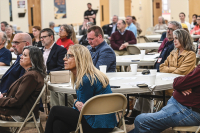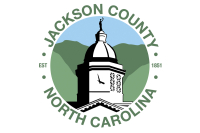Déjà vu in the woods
I was invited to help lead a bird walk focusing on wood warblers at this year’s 64th annual Spring Wildflower Pilgrimage in the Great Smoky Mountains National Park. I was invited to help by Dr. Patricia Blackwell-Cox.
Pat, as I knew her wwwaaaayyyy back when we were both students at Northeast Louisiana University, now (ULM) University of Louisiana Monroe, is and has been for a number of years one of the coordinators for the Wildflower Pilgrimage. Pat taught botany at the University of Tennessee Knoxville for a number of years then pulled a stint with TVA and is now back at UT, where she teaches some courses and helps with the herbarium and, of course, leads fern walks for the Pilgrimage.
First, I have to say I was quite honored to be asked to help out at the Pilgrimage. To get to rub shoulders with gifted scientists, teachers, naturalists and researchers like Pat; Dr. Alan Wheatley of UNC; Dr. Dan Pitillo, retired WCU; Fred Holtzclaw, who was my co-leader, an AP biology teacher and current chairman of the SAT II Biology Test Development Committeee; plus so many other gifted teachers whose soul reason for being there was their desire to share their knowledge and love for the environment with interested pilgrims.
I was able to sit down with Fred for a little while during dinner Friday night to see the game plan. He told me to prepare for a slow day bird-wise — migrants were not really flowing into the Smokies at the moment. But, he said, we would be starting out at the Sugarlands Visitor Center, and northern parulas, yellow-throated warblers and Louisiana waterthrushes were there and quite vocal.
We arrived at Sugarlands around 8 a.m. on a drizzly Saturday morning. Our hike was limited to 12 participants, and although it was listed as full we wound up with only seven pilgrims that wet overcast morning. And that’s not necessarily a bad thing when you’re birding — smaller groups are better for getting everyone on the same bird at the same time.
True to Fred’s predictions, we were being serenaded by yellow-throated warblers and northern parulas as we sat in the parking lot at Sugarlands waiting for everyone to arrive. After everyone arrived we started out into the mist. The focus of the trip was wood warblers, but we, of course, didn’t pass on other birds that presented themselves. We got great looks at chipping sparrows and eastern bluebirds as we made our way across an open area at the visitor center. We also found a cooperative red-eyed vireo as soon as we once again entered the woods. We were near a small creek where we could hear a Louisiana waterthrush singing. As we were trying to track this creek-side singer, we found a little different habitat — a marshy area. And, as if by cue, we heard the loud chip of a northern waterthrush. While Louisiana waterthrushes go for running water, their cousins (northern waterthrushes) like the mushy, boggy stuff.
Related Items
It was pretty cool to have these two habitats and their respective representatives within a couple of hundred feet of each other. We (some of us) got better looks at the northern waterthrush, but since it doesn’t nest in the area it wasn’t singing like the Louisiana waterthrush, of which we only got fleeting glances.
We rounded a bend in the trail at Sugarlands and saw a group of pilgrims ambling toward us. It was easy to see that their focus was at the herb level, not the bird level. But, even at a distance, when I saw the leader of the group I was whisked through a time portal.
There, a bit more portly and perhaps a half-step slower and a little grayer, was Dr. R. Dale Thomas pointing out plants to an attentive group of pilgrims. Dr. Thomas was my — and Pat’s — plant taxonomy and systematics professor at Northeast Louisiana University (now University of Louisiana Monroe). There is no way of counting how many steps across fields and/or through woods I followed this figure, waiting for him to stop, stoop down, pluck a plant and turn around to face us, adjust his small rectangular eyeglasses with a quick tilt of the lens held between thumb and forefinger and then begin to explain what it was we were looking at.
I am sure most of us, at least those of us past puberty, can look back upon a teacher or teachers at some point in our educational odyssey who awakened that blinding light of interest and curiosity, who stimulated the desire to learn. Teachers are teachers first, because they are learners, and what the best teachers are able to do is share that thirst for knowledge. Dr. Thomas was one of those teachers for me. And to see him reach up with thumb and forefinger, shift those glasses and say, “How’s it going?” well, my day could have been complete right there.
But we visited for a minute and then his group, with numerous Louisiana pilgrims and with heads bent towards the earth, and my group scanning the skies and treetops, went our separate ways.
(Don Hendershot is a writer and naturalist. He can be reached a This email address is being protected from spambots. You need JavaScript enabled to view it..)









